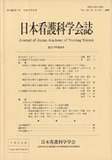Japanese
English
- 販売していません
- Abstract 文献概要
- 参考文献 Reference
- サイト内被引用 Cited by
要旨
1.健康な成人女子30名を体格別(肥満群,標準群,やせ群)に各10名を対象として,板上における腰部の体圧分布測定を実施した.
測定装置,測定器具,測定方法等は,前報と同様である.
2.腰部全体に加わる総荷重は,肥満群が有意に大きく,その受圧範囲は,やせ群が有意に狭かった.また,仙骨部の総荷重は3群間に有意差はなく,その受圧範囲はやせ群が有意に狭かった.
3.体格別に体圧分布状況を等高線図,鳥瞰図(3次元グラフ)で示すことにより,荷重と受圧範囲の関連性が立体的に理解することができ,体格別の差異がより明確になった.そして,やせ群は狭い範囲に高い圧が加わることがわかった.
4.ヤコビー線を基準とした場合,腹臥位における仙骨突出部までの距離と,仰臥位での最高値を示した部位までの距離は,共に体格と有意な差はみられなかった.
Abstract
Body pressure distribution was measured in the hip region of adult women lying on a flat wooden plate in the dorsal position. Thirty women subjects were divided into three groups of ten each, that is, fat, normal and thin types with regard to physical constitution.
The method and measuring apparatus were the same as in the previous report.
The total pressure load of the hip region and the sacrum was fat type>thin type>normal type.The load receiving area, however, was fat type>normal type>thin type. The result showed that the thin type received a relatively high pressure load considering its small load area. The pressure distribution was indicated more clearly by using an isobaric figure or a three dimensional display.
Both the distance from the Jacobi line to the sacrum in the prone position and the distance from the Jacobi line to the region of the highest pressure value in the dorsal position did not seem to have any significant relation to physical constitution.
Copyright © 1990, Japan Academy of Nursing Science. All rights reserved.


